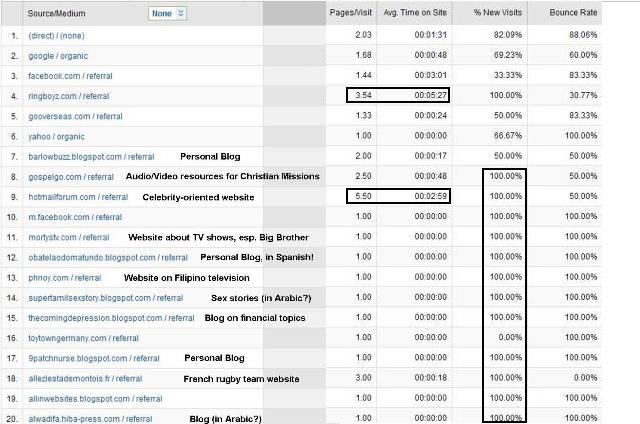Getting a "Feedjit Rush" to Schnitzelbahn
 Monday, October 24, 2011 at 8:00
Monday, October 24, 2011 at 8:00 As part of the blogging experience, we have used and discussed Google Analytics. While that is a tool to look at data from past traffic, the more interesting questions is how to proactively increase future readership.
Schnitzelbahn is an income-free hobby for Frau A and I (notice... no ads) so we don't obsess about this.
However, my Mom has a family blog and I noticed a free banner on her page that shows who's been on site.
(You should let that first part sink in a little... my Mom has a blog! She is so cool.)
The banner showed general info about recent viewers of her blog - notice I'm at the top, "from Munich, Bayern":
I found it ironic that in the second banner (right, above), this company itself had poor formatting (the "e" in "site"). And they are trying to convince me that they can drive traffic to Schnitzelbahn? Not a good first impression.
Nonetheless, out of curiousity, I clicked the bottom of the above banner to see exactly what the proposition was to "Get visitors to your site" and how they could offer to get us 6 million ad views/clicks for less than 50 bucks:
So the company is called Feedjit. They offer the banner that my mom has for free -- she gets neat info, and they get free advertising space... to sell ad space. They also offer more advanced (pay) versions of that banner, plus underlying analytics (probably like Google's) to get detailed info about visits, time per page, click path, etc.
For a "Rush" of visitors, our Schnitzelbahn ad would appear at the bottom or their banner. More details here:
Well, why not? So I wrote some quick 4-line copy that markets Schnitzelbahn with "share our adventure".
I mentioned specific things that I thought would stand out or attract more clicks (e.g., beer, BMW, Alps):
So, on 1 September at 17:00, our copy started appearing in the Feedjit banners around the world.
You can refresh the status page at any time to view progress. After 15 minutes our "ad" had appeared on pages "seen" by over 56,000 people. That's 3700 "impressions" per minute... it'll take a while to get to 6 million.
After 15 hours active, they reported our "ad" had received access to almost 2.5 million "impressions"...
... then after about 1.5 days they claimed we had received the promised 6 million "impressions" -- from which only 282 people actually decided to click on the banner ad and navigate to Schnitzelbahn. That is a click rate of 0.005%.
Was that a bad result? A good one? Hard to tell. It was certainly cheap! The ad was not placed in a focused manner. It could have (and surely did) appear in any country, on web sites pertaining to any random topic. The "eyeballs" that we received may or may not have been inclined to or capable of (English!) visiting Schnitzelbahn.
What was really interesting is the info from Google Analytics afterwards.
What sites ("referrers") that had the Feedjit banner ad and had people that clicked over to Schnitzelbahn?
Celebrity gossip and TV shows, Christian mission, a French rugby team, and even erotic Arabic stories! Wow!!!

Of the people that visited us those days, readers from China and Taiwan surfed the most and stayed the longest:
This was a fun experiement for $49, but probably did not fundamentally change the Schnitzelbahn readership.
But it's another learning experience. Any readers have recommendations for other things we should try like this?
 Herr J ...
Herr J ...  5 Comments
5 Comments 



